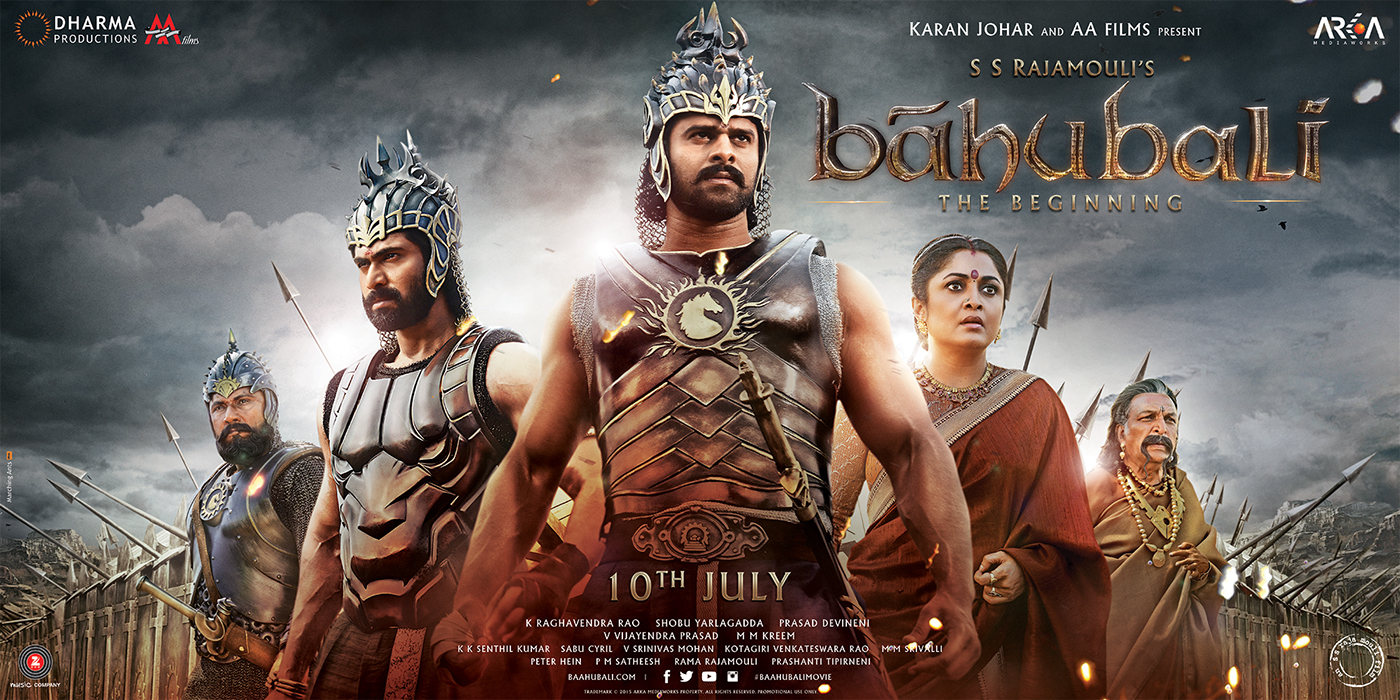Kuffir
~ Social and individual efficiency requires us to develop the capacity of an individual to the point of competency to choose and to make his own career. This principle is violated in the Caste System, in so far as it involves an attempt to appoint tasks to individuals in advance—selected not on the basis of trained original capacities, but on that of the social status of the parents. ~ Babasaheb Ambedkar, Annihilation of Caste

I didn’t catch the beginning of the conclusion (Bahubali 2), and dozed through most of the climax. The best of business presentations can’t hold your attention for three hours, can they?
There are many Bahujans who have already pointed out how the film is casteist in nature, propagating values of varna hierarchy. But that’s only half the story: all films made in India promote caste, the ideology of the ruling classes. This is inevitable because of the way they are made, and the interests they serve. How Bahubali was made tells us more about Indian society than what Bahubali says.
Look at how the cast was chosen: one Raju ‘hero’ (upper caste), one Kamma ‘villain’ (upper caste), one Bunt female lead (dominant caste), another Khatri female lead (upper caste), one Brahmin female supporting actor (Iyer, supposedly), one Muslim, one Gounder (dominant caste). Among the minor support characters, I could spot more than one Brahmin (playing the purohit, and hero’s tribal mother etc), another Raju and a Reddy (upper caste). And so on.
If 100% of the main and supporting cast is composed of upper caste actors, it is easy to recognize that the main criterion for choosing them was caste, not competence. Even if all the actors were replaced by others you can be sure that they would again turn out to be from upper castes, because the whole pool of actors available would be totally dominated by them. So the choice is not intentional, entirely. As Marx said: in the social production of their existence, men inevitably enter into definite relations, which are independent of their will, namely relations of production appropriate to a given stage in the development of their material forces of production (Preface to A Contribution to the Critique of Political Economy; italics mine).
This is the first indicator of how caste mode of production dominates Indian cinema in general, and Telugu cinema in particular.
The cast was therefore chosen and compensated chiefly for their status in society (faithfully reflecting Babasaheb’s pithy insight that the caste system attempts to ‘appoint tasks to individuals in advance’) and their earlier performances and suitability for the role/s came into consideration only later, but the spin you hear from industry wags would be quite different, of course. Forget all the bourgeois ideals of merit and hard work etc, only birth counts more than anything in this ‘industry’.

How were the rest of the actors who played all the hundreds of bit roles paid? Even though the junior actors are unionized, there’s a clear hierarchical division of labourers among them (there are grades within them), and the filmmaker has all the liberties to define relations with them along the same lines as those that exist between the upper caste landlord in the village and farm workers. The same relations exist between the various kinds of support crew on the sets – the spot boys to light men, the helpers, the transporters etc etc.
But there were other Bahujans, treated only slightly differently from the junior actors, performing many vital functions, who also contributed to the making of the film. Like for instance, the screenplay of the film is credited to Rajamouli and his father, the lines or ‘dialogues’ to other writers in Telugu, Hindi, Tamil, Malayalam. This is where lots of Bahujan writers toil hard, in the hope that someday their names would be acknowledged, but most perish in anonymity, ultimately. There are other such hapless Bahujans in all other significant departments – from direction to cinematography to production design etc, working in a very informal salary or wage system, or many times for free.
As the Dalit poet and film lyricist Jaladi Raja Rao said in a song:
‘Kootha nerchinolla kulam kokilantara/ Aakalesi arisinollu kakulantara’
(Those who have learnt to sing belong to the caste of koels, they say/ Those who wail in hunger are crows).
For all the nameless Bahujan workers who were also visible on the screen, and the many who worked on the sets or in other departments – for all the ‘crows’ — Bahubali was nevertheless a godsend because it helped them stave off hunger for several months. That’s the state of enslavement the industry keeps them in – while the glamour of the medium draws them in initially, their creative instincts keeps their hopes and aspirations alive and the work and wage conditions provide them with just enough sustenance to keep their bodies together and keep slogging away.
How does one describe such underpaid or hardly paid physical and intellectual labour? Their relationship with their patrons can best be described by referring to the traditional vetti or begar labour.
How’s Bahubali a business presentation? Business presentations too use a mix of sensory and cognitive devices to basically promote an idea. Bahubali does the same, like all mainstream films, it sells the idea of the caste order.
Why did it become such a big hit, if all films sell the same idea?
The parallels with the Hollywood film ‘The Birth of a Nation’, released in 1915, exactly 100 years before Bahubali (The Beginning), are quite a few. The Birth of a Nation was the first blockbuster perhaps in cinematic history: made with a budget of around 100,000 dollars, it went on to earn around 20 million dollars. Like Bahubali, it too had one major idea to sell, that of white supremacy. Like Rajamouli, D W Griffith used unprecedented spectacle and scale to whitewash his inherently inegalitarian philosophy. As the film critic Richard Brody says in The New Yorker:
‘The worst thing about “Birth of a Nation” is how good it is. The merits of its grand and enduring aesthetic make it impossible to ignore and, despite its disgusting content, also make it hard not to love. And it’s that very conflict that renders the film all the more despicable, the experience of the film more of a torment—together with the acknowledgment that Griffith, whose short films for Biograph were already among the treasures of world cinema, yoked his mighty talent to the cause of hatred (which, still worse, he sincerely depicted as virtuous).’
That’s only half true about Bahubali. The film is slick and grandly presented but it doesn’t display the virtue of creating any new ‘grand and enduring aesthetic’. That’s where the parallels with Griffith’s film end. It is essentially a film of the Modi age: as loud, as crude and as shameless about celebrating unequal power and prejudice. It is a film that celebrates the unabashed assertion of caste pride of the young, successful, new age Brahmin-savarna, of the grandchildren of Nehru and Savarkar, across India and the world.
To be continued
~~~
Images courtesy: The Net










